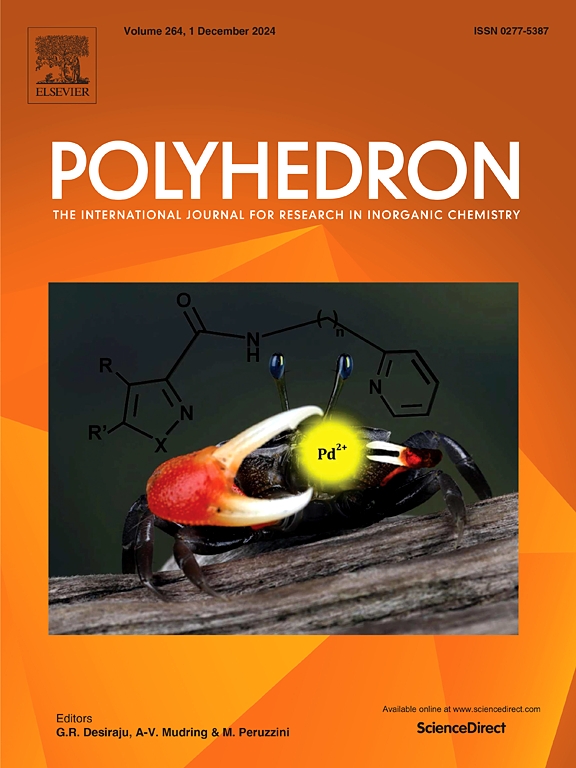Enhancement of degradation of herbicide atrazine through efficient manganese-porphyrins: Mechanistic insights, degradation products, and toxicity assessment
IF 2.4
3区 化学
Q2 CHEMISTRY, INORGANIC & NUCLEAR
引用次数: 0
Abstract
The herbicide atrazine (ATZ) is widely used in weed control, especially in Brazil. Its persistence and toxicity raise environmental and health concerns and may cause several problems. In this context, manganese porphyrins emerge as promising catalysts for ATZ degradation, mimicking the action of cytochrome P450. This study evaluated the catalytic potential of five manganese porphyrins in the degradation of ATZ under mild conditions. Different oxidants were tested, including Oxone®, H2O2, iodosylbenzene, and iodobenzene diacetate. The effect of axial ligands as cocatalysts was also investigated. The best results were obtained for third-generation porphyrins and the iodoarenes oxidants, achieving up to 85% of ATZ degradation, the best result for Mn-porphyrins so far. Axial ligands did not bring improvements to the catalytic systems while assessments with radical inhibitors indicated the participation of reactive species, such as MnV-oxo, ·OH, and 1O2. Mass spectrometry analysis confirmed the formation of the main ATZ metabolites, mostly desisopropylatrazine, and the formation of 6-acetamidoatrazine which is observed for the first time for manganese porphyrins catalyzed systems.

通过高效锰卟啉增强除草剂阿特拉津的降解:机理见解,降解产物和毒性评估
除草剂阿特拉津(ATZ)被广泛用于杂草防治,特别是在巴西。它的持久性和毒性引起了对环境和健康的关注,并可能造成若干问题。在这种情况下,锰卟啉作为ATZ降解的有希望的催化剂,模仿细胞色素P450的作用。本研究评价了5种锰卟啉在温和条件下降解ATZ的催化潜力。测试了不同的氧化剂,包括Oxone®、H2O2、碘基苯和二醋酸碘苯。研究了轴向配体作为助催化剂的作用。第三代卟啉和碘芳烃氧化剂的ATZ降解率达到85%,是目前为止mn -卟啉的最佳降解效果。轴向配体并没有改善催化体系,而自由基抑制剂的评估表明,MnV-oxo、·OH和1O2等活性物质参与了催化体系。质谱分析证实了ATZ主要代谢物的形成,主要是去异丙基latrazine,并且在锰卟啉催化体系中首次观察到6-乙酰氨基oatrazine的形成。
本文章由计算机程序翻译,如有差异,请以英文原文为准。
求助全文
约1分钟内获得全文
求助全文
来源期刊

Polyhedron
化学-晶体学
CiteScore
4.90
自引率
7.70%
发文量
515
审稿时长
2 months
期刊介绍:
Polyhedron publishes original, fundamental, experimental and theoretical work of the highest quality in all the major areas of inorganic chemistry. This includes synthetic chemistry, coordination chemistry, organometallic chemistry, bioinorganic chemistry, and solid-state and materials chemistry.
Papers should be significant pieces of work, and all new compounds must be appropriately characterized. The inclusion of single-crystal X-ray structural data is strongly encouraged, but papers reporting only the X-ray structure determination of a single compound will usually not be considered. Papers on solid-state or materials chemistry will be expected to have a significant molecular chemistry component (such as the synthesis and characterization of the molecular precursors and/or a systematic study of the use of different precursors or reaction conditions) or demonstrate a cutting-edge application (for example inorganic materials for energy applications). Papers dealing only with stability constants are not considered.
 求助内容:
求助内容: 应助结果提醒方式:
应助结果提醒方式:


